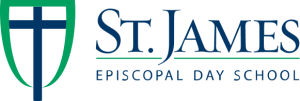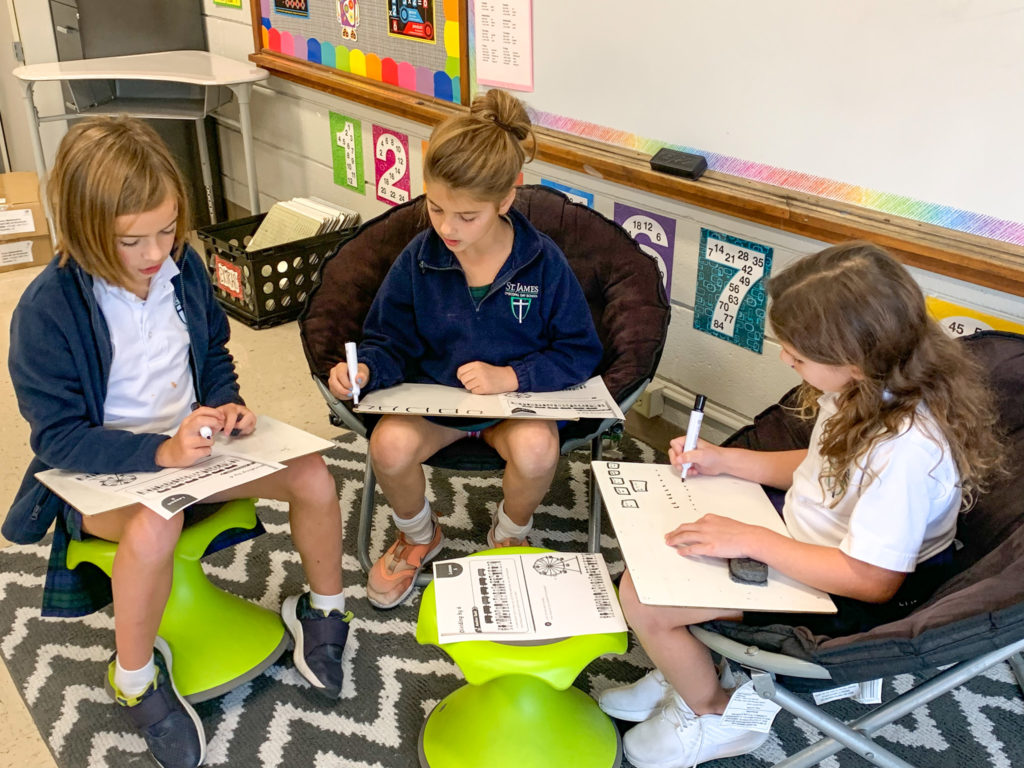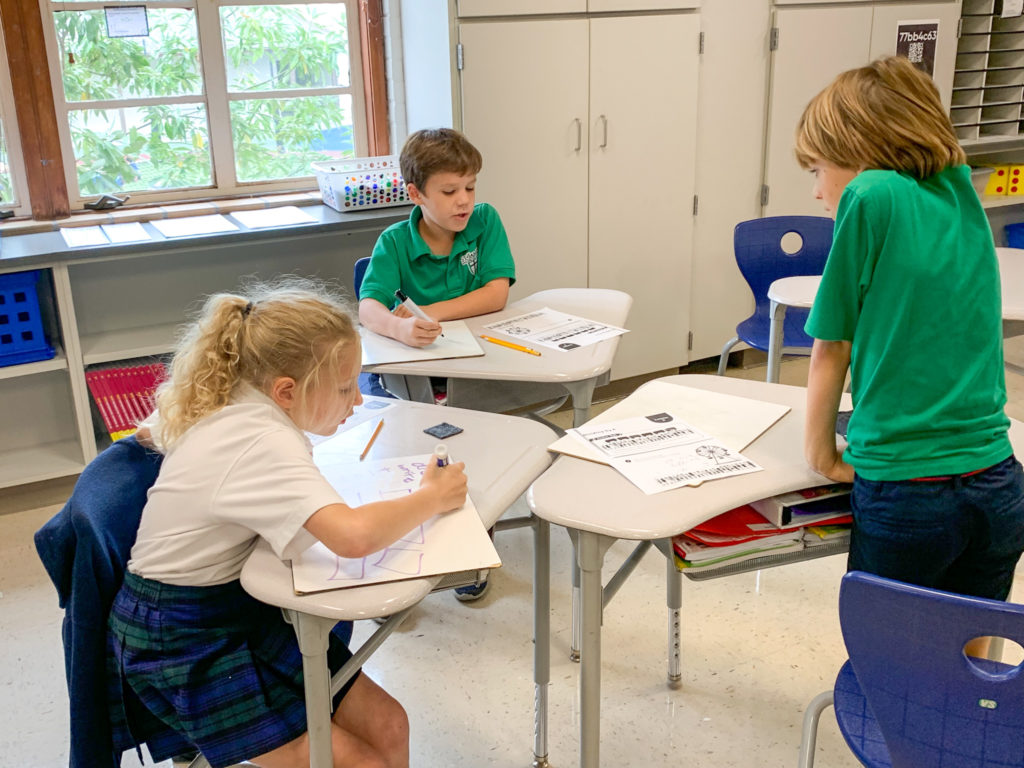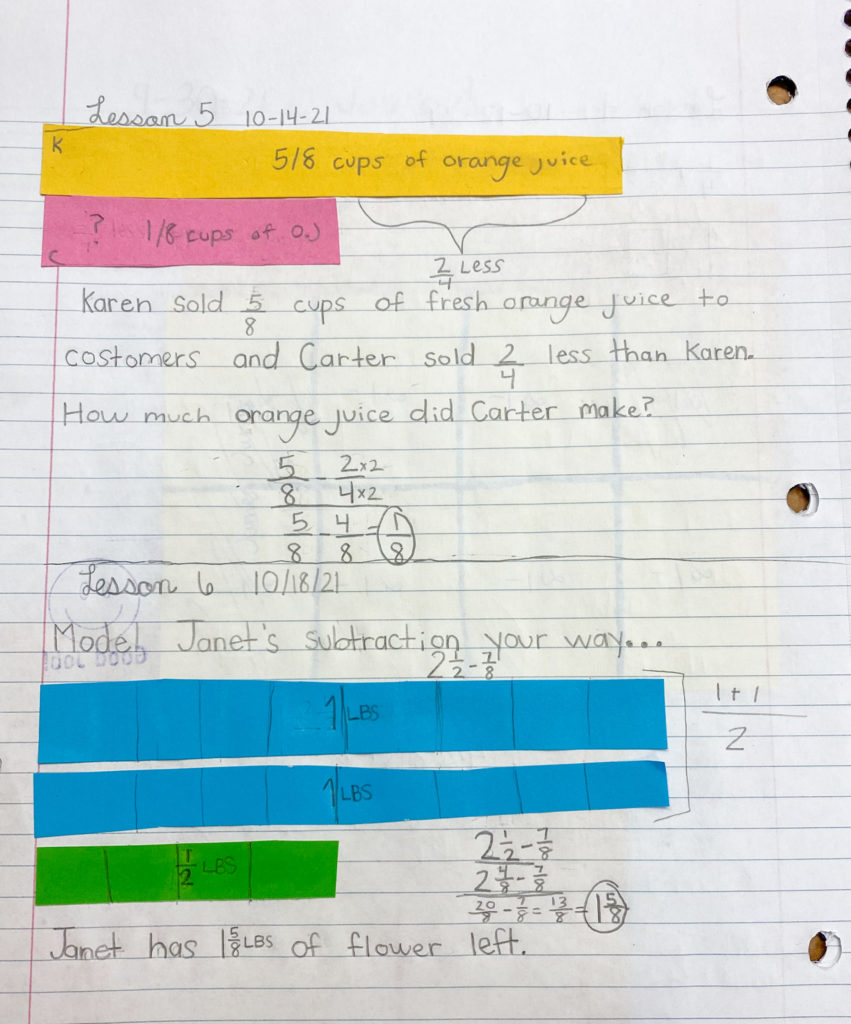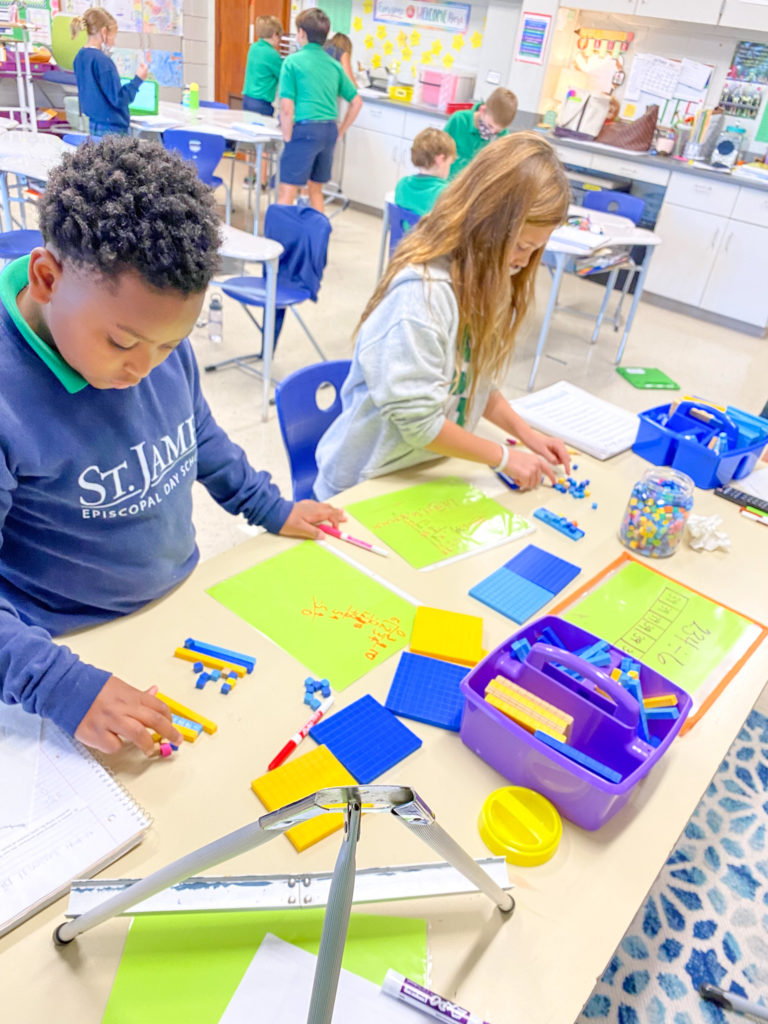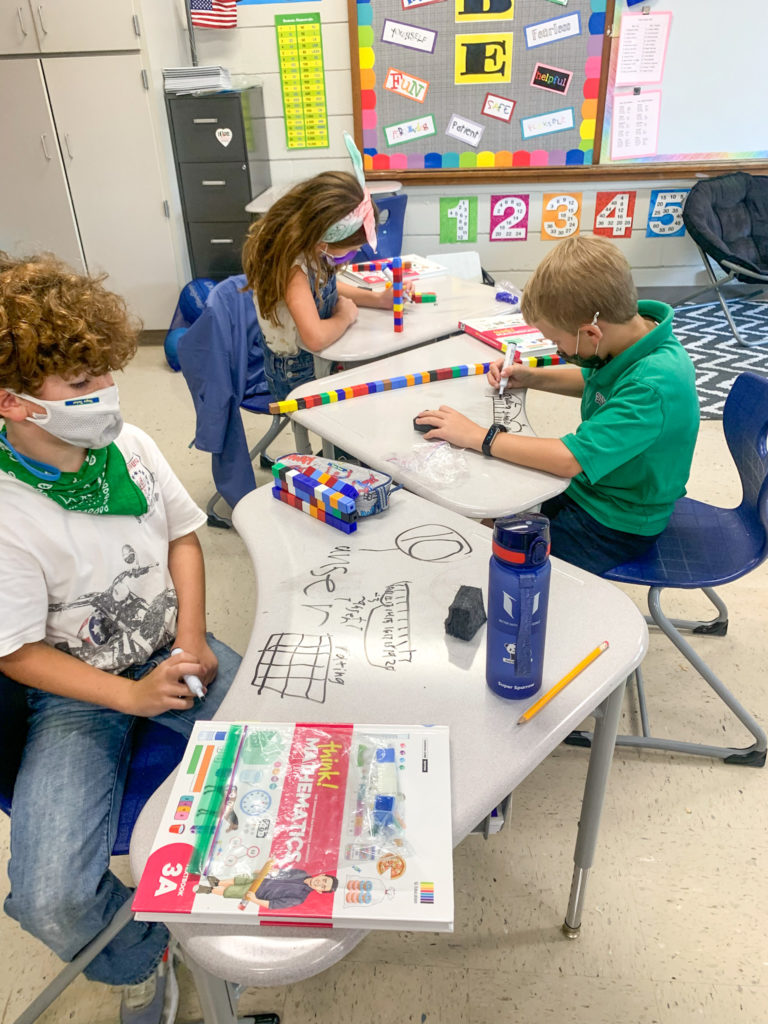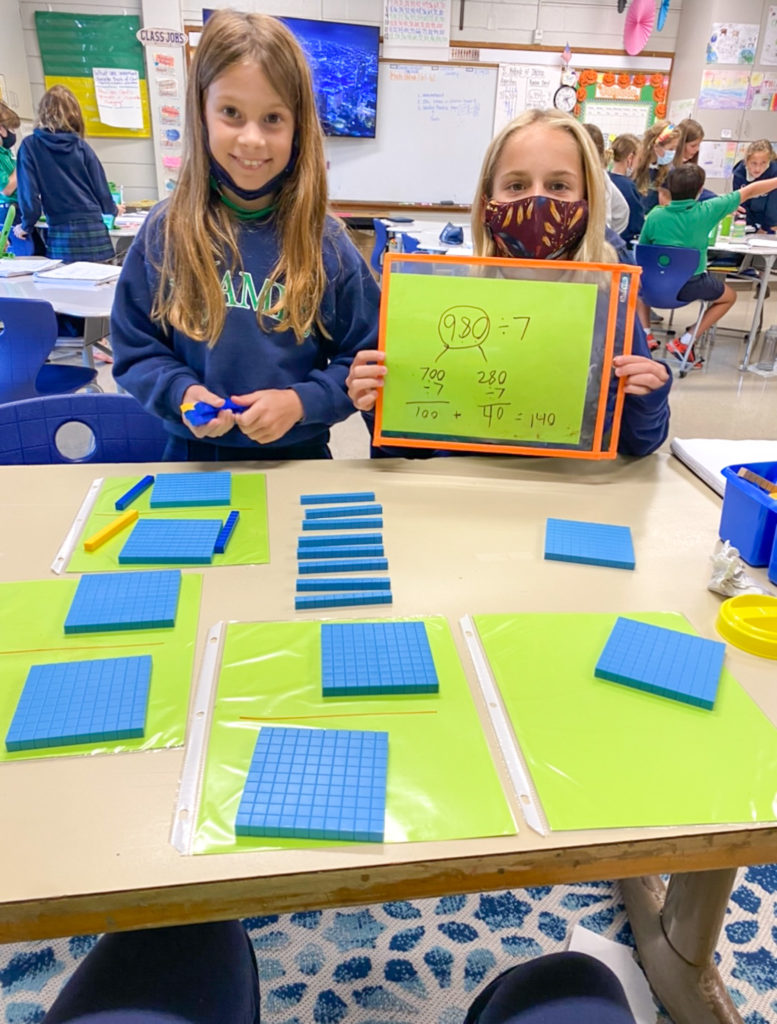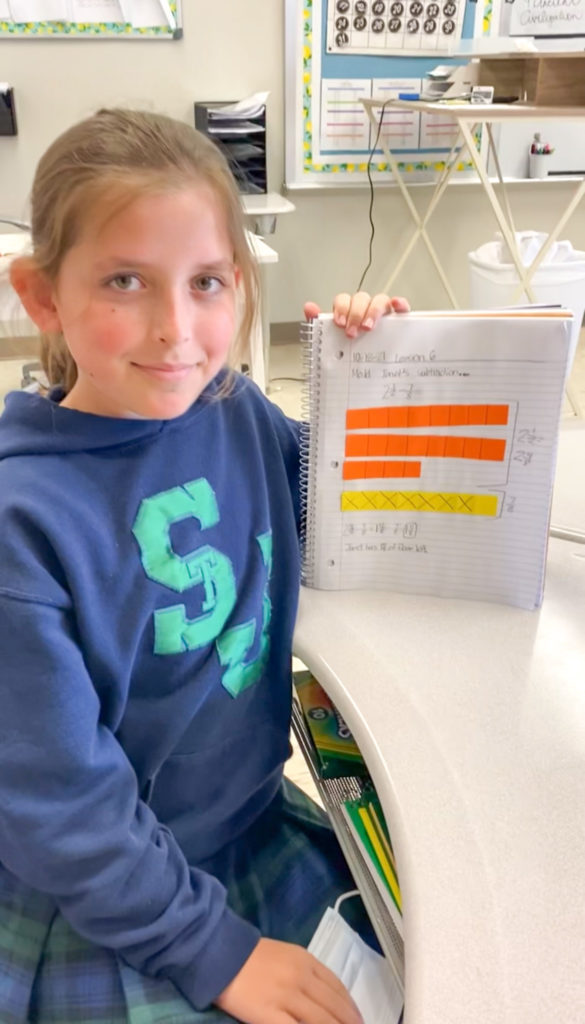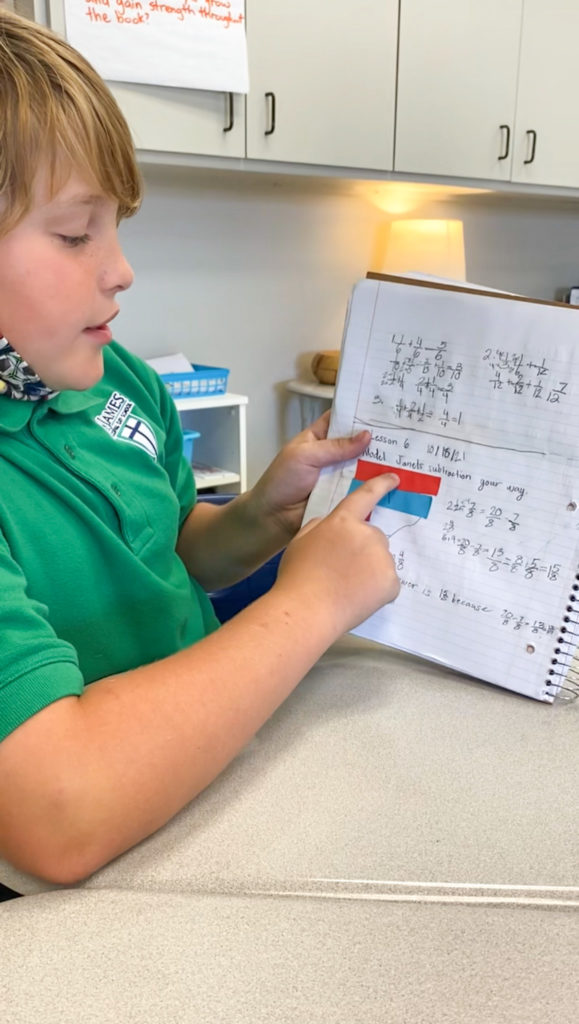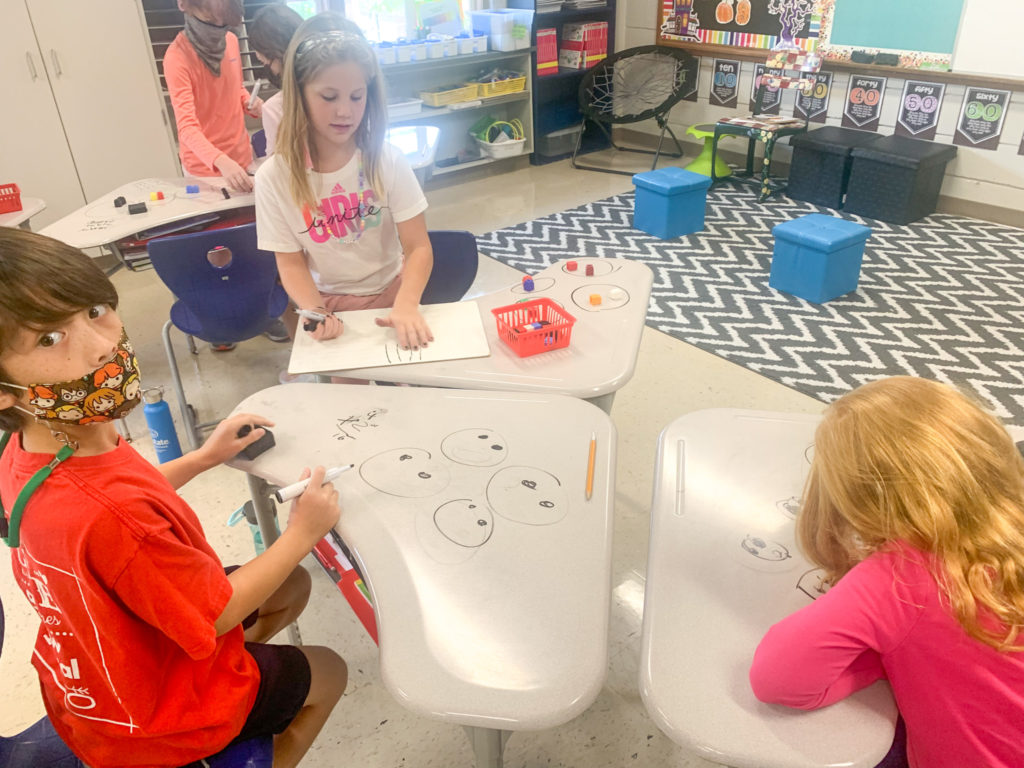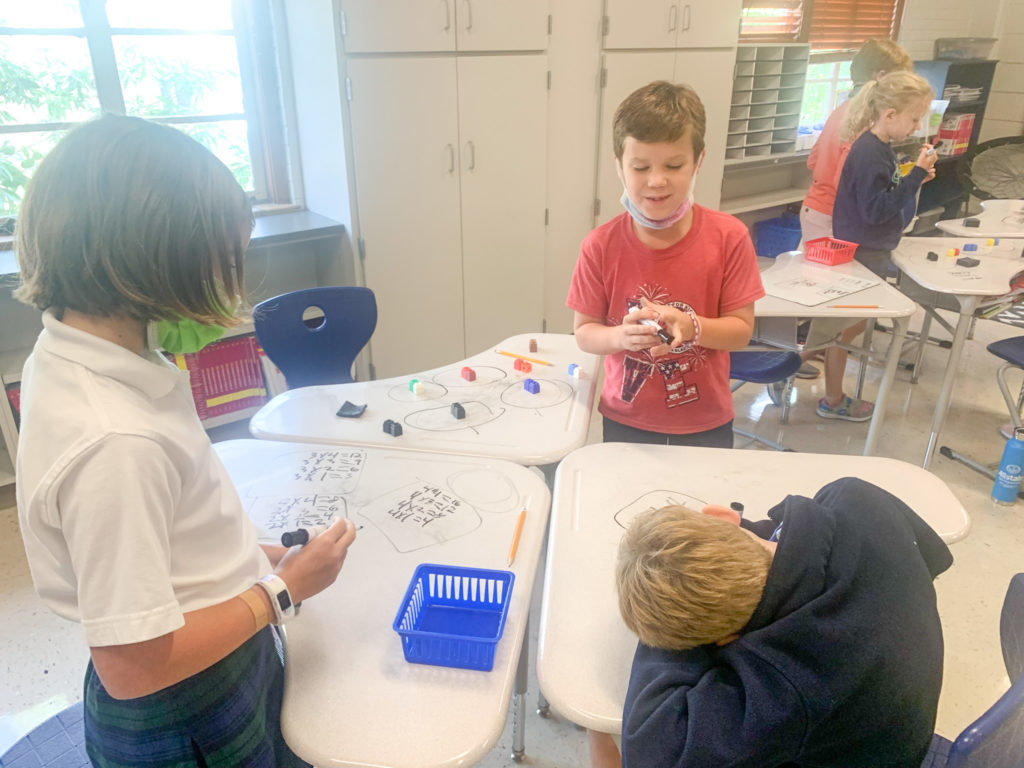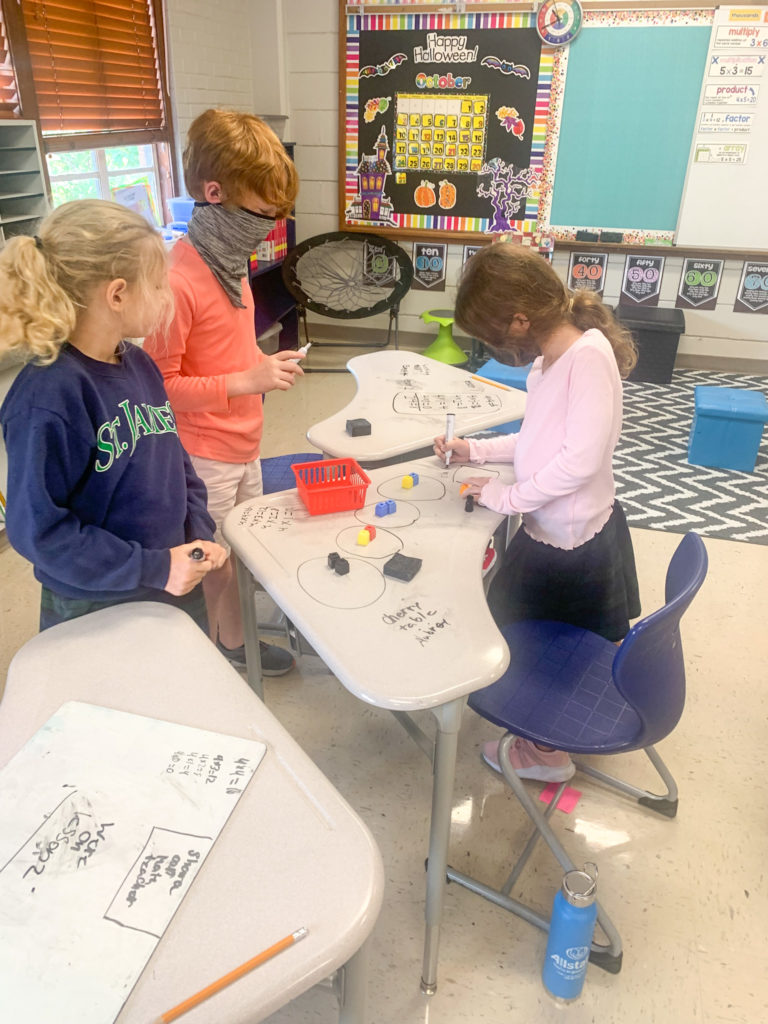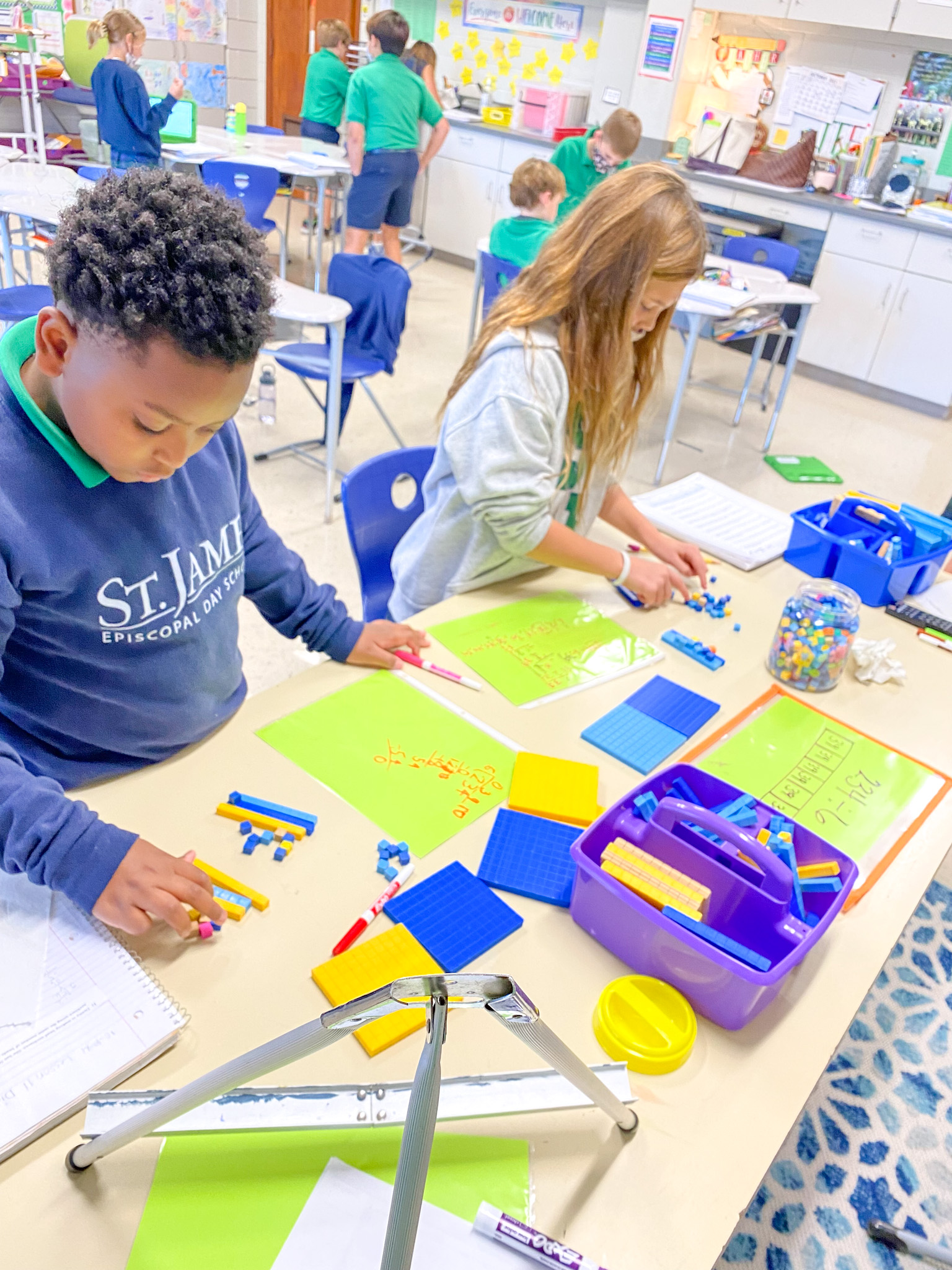
Mentoring Mathematicians
In order to prepare children for 21st century challenges, the views of what is important in teaching math have shifted. It is not enough for students to memorize math facts and algorithms and find correct answers. We now recognize that students need to be able to do math, to understand the math they are doing, to communicate that understanding, and apply skills to solve problems. We want our students to be mathematical thinkers, not just to follow a series of memorized procedures. This notion of math proficiency was at the forefront of our decision to adopt the think!Mathematics series.
The think!Mathematics program provides the structure and framework for our teachers to address both the math content standards (what should be taught at each grade level) and the math practice standards (how math should be taught). Our teachers incorporate a CPA (concrete-pictorial-abstract) approach to learning that allows our students to build conceptual understanding through hands-on exploration of math concepts. In alignment with the math standards, the think!Mathematics program assures that conceptual understanding is built before standard algorithms are taught. All math lessons begin with a problem for students to solve. The students work collaboratively to explore multiple solutions to a single problem and to explain their reasoning to others. In our math classrooms, students are encouraged to engage in productive struggle and persevere with tasks even if they are difficult. By fostering these skills and dispositions in our students at an early age, we are setting them up for success in becoming mathematical thinkers.
Helping students develop strong number sense is a key goal of think!Mathematics. Students with strong number sense are able to think flexibly about numbers and decompose them in multiple ways. Starting in PreK, students explore the notion that numbers can be broken into parts. This skill is further developed in subsequent grades through the use of number bonds. Students who are able to break apart numbers in multiple ways can use this flexibility to solve problems. As an example, when solving for the basic addition fact of 8 + 7 a student who thinks flexibly about numbers can say that 8 + 7 is the same as 8 + 2 + 5 which is the same as 10 + 5 giving them an effective and efficient fact strategy. This skill applies to the operations of multiplication and division as well. Students may not be able to solve 52 ÷ 4 easily, but the problem becomes one they can solve mentally if they are able to break 52 into 40 and 12 which are numbers that are easily divisible by 4. Flexible thinking about numbers lets us know that 197 + 56 becomes a much easier problem to solve when we see it as 200 + 53. By training our students to think this way and use mental math techniques, we open their eyes to the notion that there are many ways to solve problems and that their job is to find the most efficient way. We are well on our way to preparing the next generation of mathematically proficient students who have the knowledge and disposition to meet 21st century challenges.
